Anime is steadily picking popularity in India and probably will continue to do so for years to come. The general prejudice against anime that it is only for kids is gradually being dismissed. Anime is becoming easier to access due to streaming services bringing more anime-related content onto their sites.
Shinkai Makoto, the director of “Your Name” and “Weathering with You,” has appeared in India for the premier show of Weathering with You; this shows how far the Indian anime community has come and how seriously the Japanese studios are viewing India as a potential marketplace.
So, without any more delay, let’s jump right into the future of anime in India
[toc]
#15 Fall of Animax

Animax is a name few knew, and many chose to ignore. Probably one of the first channels and early movers that bought the concept of Anime to the Indian Community. Being the first mover and bringing in a new form of entertainment, the channel should have made waves in the industry. But the future had other plans for the channel.
Did you know that the channel Animax came to India because of Sony Entertainment Pictures? It was an anime bonanza for viewers. This channel broadcasted everything from One Piece to Naruto to Bleach to FairyTail. Times were different back then. I am sure some of you are taking a trip down memory lane right now, right there with you.
Unfortunately, Animax launched itself at the wrong age. The Indian demography was not as diverse as today, which played its part in the channel’s downfall. And to add to their worries, they had several complaints against them in the BCCC for distasteful and obscene content in the shows. Thus, the slow death of Animax began.
The channel hung its gloves and exited the Indian market somewhere in 2017’s ending its miserable roller coaster ride. Thanks to Animax, we, as Indians, got acquainted with Anime and will ever be grateful for the channel. Do you want Animax to make a comeback?
#14 Not Just a TV Show
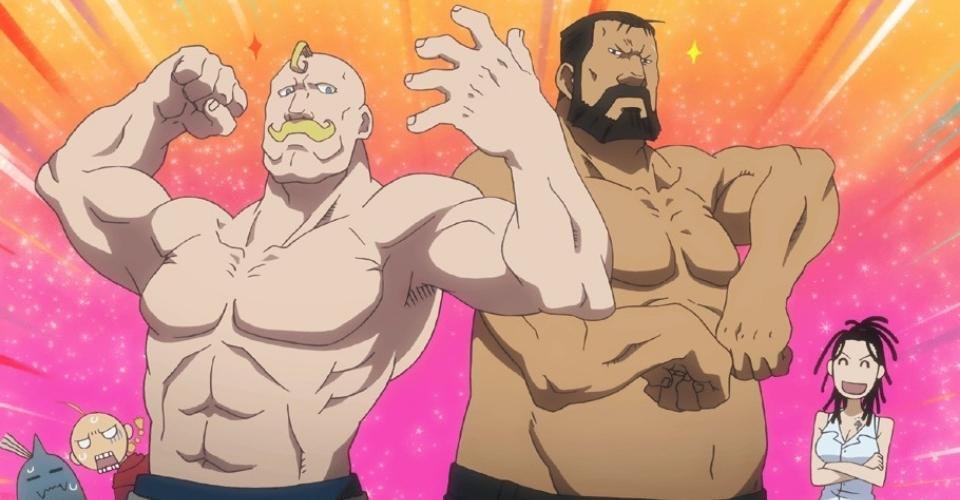
Anime in India has suffered massively due to immense parental restrictions. Anime is more than a cartoon. Most of the content is not targeted at kids but rather at teenagers and young adults.
Indian parents frowned upon those teenagers who watched anime, labeling it for kids. Yes, a part of anime targets kids, but generalizing it is of utmost carelessness on behalf of the parents and people alike. Anime is much more than just a form of entertainment, and people should realize it for a fact.
Anime not only made us connect culturally with the Japanese, but it goes deeper than that. From hit Shonnen classics like One Piece and Naruto, which throw heavy light on the importance and the value of friendship and relationships, to showing a Macho guy like Alex Louis Armstrong crying, subtly portraying that even a guy can cry. Anime is an amalgamation of life lessons. More and more viewers and non-viewers are realizing that anime is more than child-like cartoons and animations.
Fans Also Read
#13 Growing Anime Fans

We are watching past the oddity and weirdness of anime as each day passes; it is becoming mainstream media. From fanservice to fights between favorite MCs to picking your Waifu/Husbando, it has become a norm among many anime fans. This site is the epitome of that, among many other websites, pages, and forums. Gone are those days when anime was considered weird or embarrassing.
With ever-growing popularity, fans are breaking out of their chains and are more open to discussions and expressing about anime than they were a decade ago. Whether anime is pop culture is debatable, but the concept of anime is slowly integrating into Indian pop culture.
#12 Wonderful Conventions
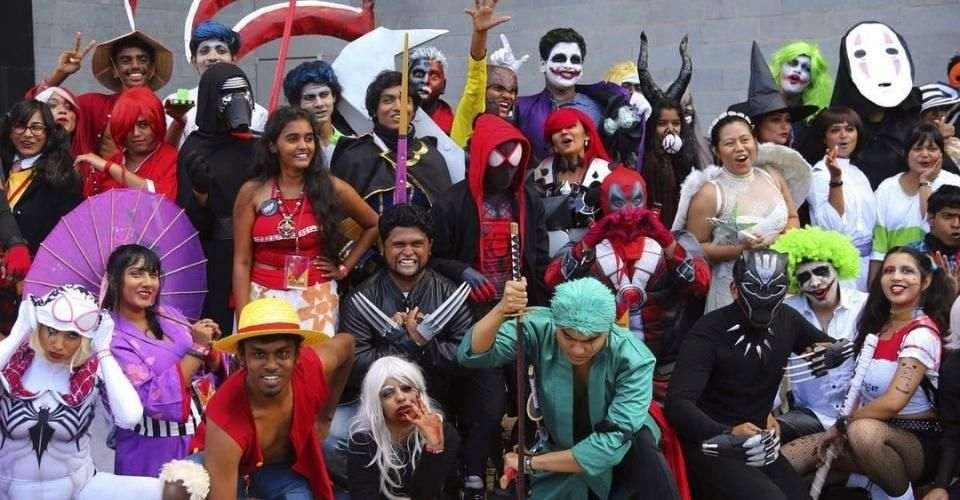
Since the first Comic-Con in San Diego, they have come a long way, figuratively and literally. Far from home, almost 8,500 miles away, comic conventions have been the fad for the Gen-Z population in India. Since its first comic convention in New Delhi in 2011, it has become one of the sought-after weekends every year in various cities.
Comic-Con is more than Marvel and DC fans coming together. Over the years, anime fans have been coming together too. The anime-related stalls, manga sales, and cosplayers drive in more sales and play a vital role in popularizing anime.
The rising popularity of comic conventions has paved the way for different exclusive conventions for anime. More sales will make anime look like a potential investment for many companies. For instance, Sony Yay has made a recent announcement of broadcasting Naruto on their channel. To makes things more exciting, they are dubbing it into Hindi. This will invite more kids and break the daunting task of reading subtitles.
#11 Censorship In India

As a kid, I am sure you came across Shin-Chan, and probably even loved the show. What’s not there to like, right? A five-year-old kid with crazy shenanigans and witty remarks. Well, the Indian censor board and parents did not “love” the show much, and the BCCC did not, too, leading to the ban of Shin-Chan in 2008 for vulgarity, suggestive nudity, and inappropriate content.
Shin-Chan had a re-edited version with censorships released a year later. The overly sexualizing character and fan service-like scenes put anime in the wrong sight of parents, which led to immense parental restrictions on anime. India’s content on TVs and censor boards go hand-in-hand, rightfully so since the content is easily accessible by all age groups.
Anime is still not socially acceptable, but we are on the right track, from anime toning down anime content to making it more appropriate to becoming more socially aware.
Fans Also Read
#10 Indian & Japanese Anime

As we have discussed earlier in the list, anime is more than cartoons; they are not mainly targeted at kids but teenagers and young adults too. Anime characters have more levels of personality and are relatable to reality, unlike cartoons. So comparing cartoons like Chota Bheem with anime is just ignorant.
Be it scary, happy, funny, or emotional – there is anime for every mood. Relatable characters elicit strong emotional responses from readers since the authors and illustrators are channeling all of their emotions into their work, which would make the job less effective.
Anime is far more unadulterated and unfiltered because it includes real-life events and emotions that go along with them, including loneliness, heartbreak, and death. Anime plays a role in teaching crucial life lessons. Anime can help develop a sense of reality among kids, teenagers, and young adults alike.
#9 Business & Revenue

Do you have a shirt or a toy of your favorite superhero on your desk? I do. Many like to show appreciation or love for their favorite character by buying merchandise, toys, or apparel. Merchandising is one essential revenue-generating factor for companies and anime studios. The first topic we touched upon in this article was the fall of Animax; failing to merchandise characters played a role in their downfall.
Merchandising not only drives sales but also creates awareness. The concept of merchandising now is different than a decade ago. Many players have jumped aboard the anime popularity and cashed.
Indians are willing to open their wallets to purchase manga collections, action figurines, and rare collectibles. This shows on to go how far the Indian Otaku has come forward. We need not be shocked if we have our own Akihabara in the near future.
#8 Youth Culture

India has focused more on their home-grown content like Chota Bheem or Motu Patlu than bringing in other named series to their audience. A part of youth is becoming weary of the repetitive content shown on television 24/7, which leaves them yearning for new and more exciting stories and series.
Companies lack funding to broadcast anime on Indian television, which leads to studios abroad not making India a target market.
Will this change in the future? There are many exciting things to still come to India. We have to sit tight and wait.
#7 India’s Niche For Anime

Japan and India are culturally very close to each other. Buddhism is one of Japan’s major religions, originating in India. So, it was no surprise that many anime series and manga took inspiration from Indian history and mythology. From Asura and Indra in Naruto to Garuda in One Piece to Eclair in Fairy Tail, they have all taken inspiration from Indian culture and mythology.
Did you know The Legend of Prince Rama was directed and produced by the Japanese? Surprised right? Indians drew inspiration from anime too. Arjun: The Warrior Prince, the movie based on the epic: Mahabharata, walks us through the tale of warrior Prince Arjun. The movie’s animation is more or less in the format of an anime.
Karmachakra is an anime-inspired drama movie shot by an Indian and looks surprisingly promising for a home-grown animation. India is slowly looking past the traditional cartoon format and is willing to produce more home-grown anime content.
What do you think? Is India creating a niche for itself in anime?
#6 Rising Manga Sales

Anime probably only came into existence due to manga. And probably the operations of anime studios are based more or less on the sales of manga. Now, manga was not popular in India, and even the handful of people who knew and watched anime were ignorant of mangas.
Thanks to growing youth demography and E-commerce companies, manga sales are rapidly growing in India. Manga sales are a crucial force that drives revenue for Japanese Studios but also help portray India as a potential marketplace.
Breaks between anime seasons are the worst. To wait for months or a year for the next season is grueling. An easy way to cut this wait is to read the manga. And the people are picking this up. More and more fans are getting into manga to cut short the wait or out of sheer interest in reading.
#5 The Unstoppable Piracy Problem

Piracy is a necessary evil for the industry in anime. Yes, piracy is wrong in any format and will continue to be so. The anime industry caters to a niche market, making anime exclusive and elusive content for many to obtain legally.
Even if you had a subscription and access to every streaming site available, you would not be able to watch every anime, as most of the anime will remain unavailable.
Studios estimate billions of dollars in loss due to manga piracy. The lost dollar would have been a potential market for studios. Due to the rampant rise in streaming platforms, there is a parallel rise in exclusive content. The Exclusive content and licensing make it difficult for fans worldwide to access it, making piracy the only possible way to access it. A silver lining that came out of piracy is the rise in its popularity. Thanks to piracy, many have come across anime and manga.
#4 Breaking The Language Barrier

Over the past years, Japanese anime culture has become widely accepted in many nations, cutting through linguistic and cultural barriers. And anime played a vital part in breaking through these barriers and allowing people to know Japan deeply. Irrespective of the languages we speak, manga and anime have successfully brought many countries together.
"Once you overcome the 1-inch-tall barrier of subtitles, you will be introduced to so many more amazing films." - Bong Joon Ho
These words by Parasite director apply to anime too. Manga and anime have developed over the years into a vehicle for the Japanese to share feelings, and emotions, convey real-life experiences and enlighten fans across the world about their nation’s rich cultural legacy. They have been known for touching minds and hearts alike. This uniqueness of their art has made it possible to spread it into many nations.
#3 Social Media Hype Train
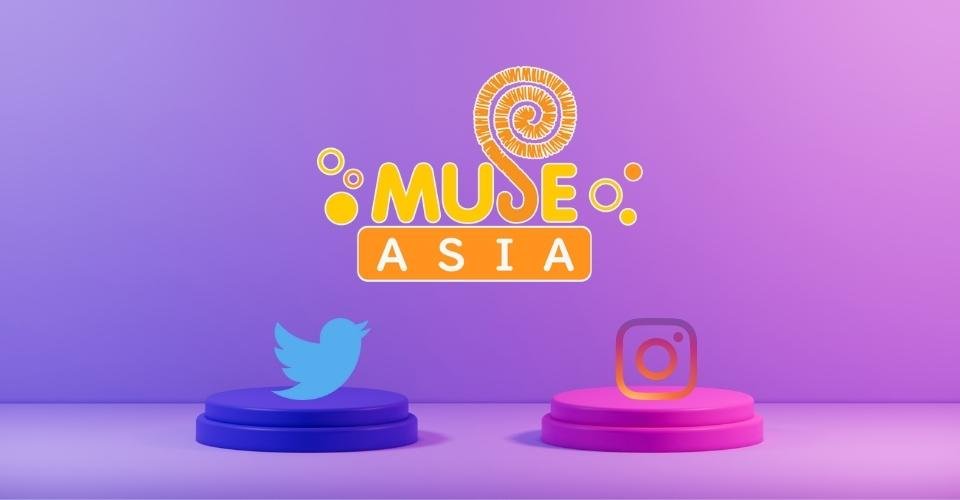
Social media has revolutionized many things, and one of the things that it influenced is what we watch too. A decade ago, anime couldn’t have reached the popularity it has today. Social media not only brings people together but also acts as a medium to educate, advertise and make such reach of anime possible. Social media, like Instagram, enabled studios to connect with fans online and offline.
Social media sites facilitate user engagement. For instance, when a friend of yours posts on their feed about an anime, you feel compelled to watch that particular anime. Various Instagram, Reddit, or Crunchyroll pages help build an anime community, fan discussions, plot, character discussions, and more.
Due to such immense engagement through social media, anime studios are becoming a part of it. Muse Asia, a distributor of Japanese anime, has launched its own YouTube channel through which the company releases anime that can be accessed and watched by anyone legally and for free. Channels like Muse Asia give anime a necessary boost for fans in India and create engagement.
#2 Theatrical Releases
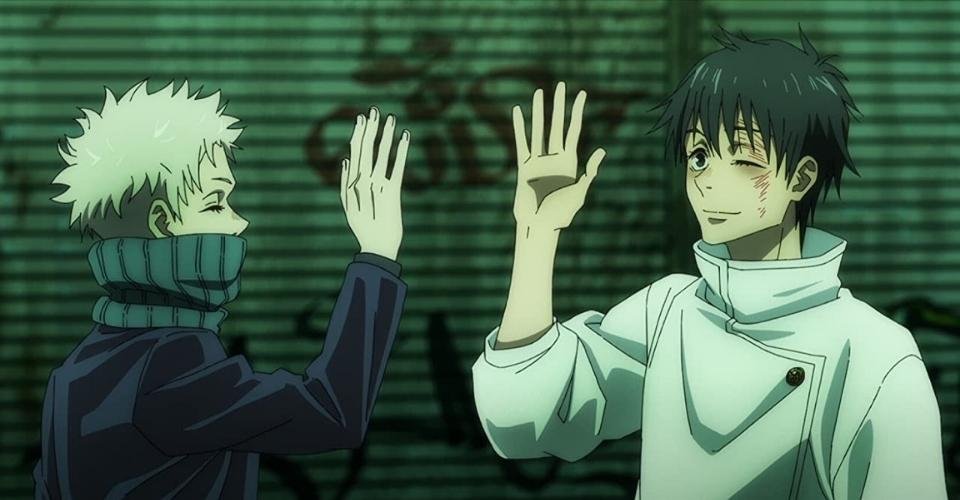
The theatrical releases of anime movies give the studios a massive revenue boost. Half a decade ago, India only witnessed movies like Doremon or Shin-Chan get theatrical releases, but this changed drastically over the years.
More and more Japanese anime studios are viewing India as a potential market. In 2019, Dragon Ball Super: Broly and Weathering with You were the first non-Doremon and non-Shinchan movies released in India. These movies were an instant hit as fans were ecstatic to see their beloved anime movies on the big screens for the first time.
Thanks to PVR pictures, since their first success of releasing anime movies in 2019, they have been committed to bringing anime movies to India. Since then, films like Demon Slayer: Kimetsu no Yaiba – the Movie: Mugen Train, My Hero Academia: Two Heroes, and Jujutsu Kaisen 0 came onto the Indian screens. Jujutsu Kaisen 0 was such a massive hit among the Indian Otaku that it made over five crores weekly.
Fans Also Read
#1 The OTT Boom

As elaborated earlier, anime is elusive for many fans in India due to next-to-none distribution companies not bringing it to India. This led to a massive increase in anime piracy among the Otaku community in India due to having no legal means of accessing anime.
The downfall of Animax and the rapid rise in streaming services made viewers shift from television to online. The pandemic only accelerated the entertainment consumption by the subscribers.
In the age of the internet and smartphones, it was high time anime got the deserved appreciation. And the key player who made this happen is Netflix. Thanks to their massive library of anime, fans in India can watch anime, all while helping the creators. The rising boom even made Netflix license exclusive anime like Kakegurui.
Fans Also Read
Well, Now let’s see some most searched questions across the web surrounding this topic.
FAQs
Is Anime Increasing in India?
In a survey by Times Of India, about 73% of the population of India watched anime in 2020. The numbers only seem to have risen since then.
Will Animax Be Back in India?
Sony YAY replaced Animax after it stopped its broadcasting transmission in 2017, and we probably wouldn’t see Animax any time soon.
Is Any Anime Channel Coming in India?
OTT platforms stream a majority of anime, and fans are accustomed to it. They are slowly moving away from TVs to over-streaming sites. However, channels like Sony YAY are still committed to bringing anime shows to their platform to air on TV.
Why Is Anime Not Available in India?
Anime is picking up its pace in the Indian market. More streaming services and movie distributors are committed to bringing anime to the Indian community.
Is Bollywood Scared of Anime?
Probably not. Whether we like it or not, the cinema industry in India is more significant than any other entertainment format.
Is Anime Big in India?
In terms of popularity, anime is on its way to becoming big in India. With more investments, studios are willing to broadcast anime and anime movies in India.
Is Anime Illegal in India?
Anime, in general, is not illegal. The mode through which most Indians consume anime probably is illegal since anime is not readily available to watch.
What Do Indian Parents Think About Anime?
Most parents think that animated series are for kids and anime are equivalent to kid cartoons.
Is Naruto Famous in India?
According to a few surveys, Naruto is among the most favored shows. According to IMDB, Naruto: Shippuden is the most popular anime in India.
What Are Anime Fans Called?
Anime fans all over the world are called Otaku.
Where Is Anime Con in India?
Many cities organize/host Anime Con, including Mumbai, Pune, Noida, and New Delhi.
That’s it from us. What do you think the future holds for the Indian Market? Will anime someday be on par with Indian cinema in terms of popularity and revenue? The only way to find out is to keep watching anime and wait.

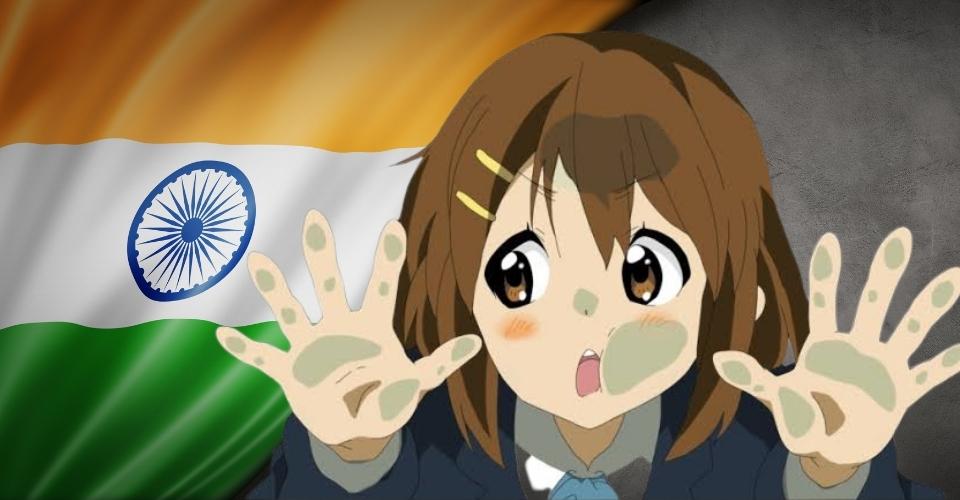
Recent Comments